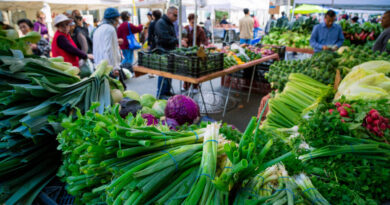Harlem New York Food Scene
Harlem, New York, is a neighborhood that pulses with vibrant culture, rich history, and a culinary landscape as diverse and dynamic as its community. Known for its deep roots in African American history, Harlem has evolved into a culinary destination where the flavors of the world converge. From soulful classics to cutting-edge contemporary cuisine, Harlem’s food scene is a reflection of its cultural tapestry and the evolving tastes of its residents and visitors.
Soul Food in Harlem
When people think of Harlem’s food scene, soul food often comes to mind. Rooted in the traditions of the American South, soul food is a cuisine born from the ingenuity and resilience of African American communities. Harlem has long been a hub for soul food, with iconic dishes like fried chicken, collard greens, macaroni and cheese, and cornbread gracing the menus of its legendary eateries.
Sylvia’s, perhaps the most famous soul food restaurant in Harlem, has been serving these comforting dishes since 1962. Known as the “Queen of Soul Food,” Sylvia Woods’ restaurant is a must-visit for anyone looking to experience the heart and soul of Harlem. But Sylvia’s is just the beginning—spots like Amy Ruth’s, famous for its chicken and waffles, and Red Rooster, where celebrity chef Marcus Samuelsson blends Southern flavors with global influences, are also key players in Harlem’s soul food scene.
Harlem’s African Cuisine
Harlem’s culinary landscape is a mosaic of cultures, and African cuisine plays a significant role in this tapestry. With a large West African population, Harlem boasts a variety of restaurants offering dishes from Senegal, Nigeria, Ghana, and beyond. These eateries serve not only as places to eat but as community hubs where people gather to share meals and stories from their homelands.
Senegalese restaurants like Chez Alain and Africa Kine are known for their rich, flavorful dishes such as thieboudienne (a fish and rice dish) and mafe (a peanut butter stew). Nigerian favorites like jollof rice, suya (spiced meat skewers), and egusi soup are also staples at popular spots like Buka and Accra Restaurant. These establishments offer a taste of Africa that’s as authentic as it is delicious.
Latin Flavors in Harlem
The Latin influence in Harlem is another critical aspect of the neighborhood’s food scene. With significant Puerto Rican, Dominican, and Cuban communities, Harlem is a treasure trove of Latin American flavors. You’ll find everything from classic dishes like mofongo and pernil to fusion dishes that blend Latin and American culinary traditions.
Calle Ocho, a popular spot for its Cuban-inspired cuisine, offers a vibrant atmosphere with dishes like ropa vieja and empanadas. Meanwhile, La Fonda Boricua is a beloved Puerto Rican eatery known for its hearty servings of arroz con gandules (rice with pigeon peas) and pernil (roast pork). Dominican cuisine shines at spots like Malecon, where rotisserie chicken and tostones (fried plantains) are crowd favorites.
Harlem’s Growing Vegan Scene
As plant-based diets gain popularity, Harlem’s food scene has embraced the trend with a growing number of vegan options. The neighborhood’s vegan offerings are as diverse as its traditional fare, with many spots putting a vegan twist on classic soul food dishes.
Seasoned Vegan, a pioneer in the vegan soul food movement, serves dishes like “crawfish” (made from yam) and BBQ “crawfish” sandwiches. Their innovative menu proves that soul food can be both comforting and plant-based. Another popular spot, Uptown Veg, offers a wide range of vegan dishes, from smoothies and salads to hearty entrées like curry chickpeas and lentil patties.
The Evolution of Harlem’s Fine Dining
Harlem is not just about comfort food—it’s also home to a burgeoning fine dining scene. The neighborhood’s fine dining options are a testament to its evolution, with restaurants that offer sophisticated menus in stylish settings.
One of the standout establishments is The Cecil, known for its Afro-Asian-American fusion cuisine. The restaurant’s unique blend of flavors and high-end dining experience has earned it critical acclaim. Vinateria, another fine dining gem, offers a Mediterranean-inspired menu with dishes that showcase the best of seasonal ingredients. Harlem’s fine dining scene is a mix of the old and new, where historic landmarks like The Apollo Theater provide a backdrop for cutting-edge culinary experiences.
Street Food and Food Markets
For a more casual dining experience, Harlem’s street food scene offers a taste of the neighborhood’s vibrant culture on the go. From food trucks to local markets, street food in Harlem is diverse and flavorful.
The Harlem Streetbird Rotisserie, a food truck by Marcus Samuelsson, serves up dishes like rotisserie chicken and mac and cheese with a twist. Harlem also hosts several food markets where you can sample local delicacies, such as the Harlem Harvest Festival and the Uptown Night Market. These events showcase the best of Harlem’s street food, offering everything from artisanal goods to freshly made empanadas.
Harlem’s Brunch Culture
Brunch has become a weekend institution in Harlem, with many restaurants offering unique takes on this popular meal. Harlem’s brunch spots are known for their lively atmospheres, bottomless mimosas, and menus that blend traditional breakfast dishes with local flavors.
The Edge Harlem is a favorite for its Caribbean-inspired brunch menu, featuring dishes like jerk chicken and waffles and rum-infused French toast. Lido, another popular spot, offers Italian-inspired brunch dishes in a chic setting. Whether you’re in the mood for a classic eggs Benedict or something with a bit more flair, Harlem’s brunch scene has something for everyone.
Bakeries and Desserts in Harlem
No exploration of Harlem’s food scene would be complete without a visit to its bakeries and dessert spots. Harlem is home to some of the city’s most iconic sweet treats, from classic pies and cakes to inventive pastries.
Make My Cake is a Harlem institution, known for its red velvet cake and sweet potato cheesecake. Lee Lee’s Baked Goods, famous for its rugelach, is another must-visit for dessert lovers. Harlem’s bakeries offer a mix of traditional and innovative desserts that reflect the neighborhood’s diverse culinary heritage.
Harlem’s Jazz and Dining Connection
Harlem’s reputation as a cultural hub extends beyond food—it’s also known for its vibrant jazz scene. Many of Harlem’s jazz clubs double as dining spots, offering live music alongside delicious meals.
The legendary Minton’s Playhouse is a historic venue where you can enjoy a meal while listening to some of the best jazz musicians in the world. Similarly, Bill’s Place offers an intimate jazz experience with a menu of Southern-inspired dishes. These venues continue the tradition of jazz supper clubs, where dining and music come together to create an unforgettable experience.
Hidden Gems: Off the Beaten Path
While Harlem has its share of famous restaurants, some of the best dining experiences can be found in lesser-known spots. These hidden gems offer unique flavors and intimate settings that make them well worth seeking out.
Lolo’s Seafood Shack is one such spot, blending Caribbean and Cape Cod influences to create a menu that’s both unexpected and delightful. The Grange Bar & Eatery, a farm-to-table restaurant with a cozy atmosphere, offers seasonal dishes made with locally sourced ingredients. These off-the-beaten-path eateries provide a more personal glimpse into Harlem’s culinary scene.
Farm-to-Table Movement in Harlem
Sustainability and local sourcing have become increasingly important in Harlem’s food scene. The farm-to-table movement, which emphasizes fresh, locally sourced ingredients, has found a strong following in the neighborhood.
Restaurants like Harlem Shambles and The Grange are leading the charge, offering menus that highlight the best of what local farms have to offer. These establishments focus on sustainability, not just in their food sourcing but also in their overall operations, contributing to the growth of Harlem’s eco-friendly dining scene.
Cultural Food Festivals and Events
Harlem’s food culture is celebrated through various festivals and events that bring the community together. These events offer a chance to sample a wide range of dishes, learn about different culinary traditions, and enjoy the vibrant atmosphere that Harlem is known for.
Harlem EatUp! is one of the most popular events, showcasing the best of Harlem’s food scene with tastings, chef demos, and live performances. African food festivals, like the NYC African Restaurant Week, highlight the rich culinary traditions of Harlem’s African communities. These festivals not only celebrate food but also the cultural diversity that makes Harlem unique.
The Influence of Gentrification on Harlem’s Food Scene
As Harlem continues to evolve, so does its food scene. Gentrification has brought new restaurants and dining trends to the neighborhood, but it has also raised concerns about the impact on long-standing community institutions.
While new establishments bring innovation and diversity to Harlem’s culinary landscape, there is an ongoing debate about the balance between preserving the neighborhood’s cultural identity and embracing change. Long-time residents and newcomers alike are navigating this complex dynamic as Harlem’s food scene continues to grow.
Dining Etiquette and Tips in Harlem
When dining in Harlem, it’s helpful to know a few tips to make the most of your experience. Harlem’s restaurants are known for their warm, welcoming atmosphere, but there are also some local customs and etiquette to be aware of.
For example, many of Harlem’s popular spots get busy, especially during brunch or dinner hours, so it’s a good idea to make reservations in advance. Tipping is customary in New York City, with 15-20% being the standard. Additionally, taking the time to appreciate the history and culture behind the dishes you’re enjoying will enhance your dining experience in Harlem.
Discover more from City Towner
Subscribe to get the latest posts sent to your email.




